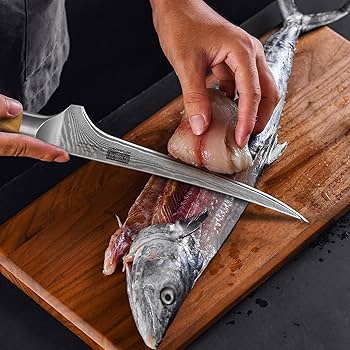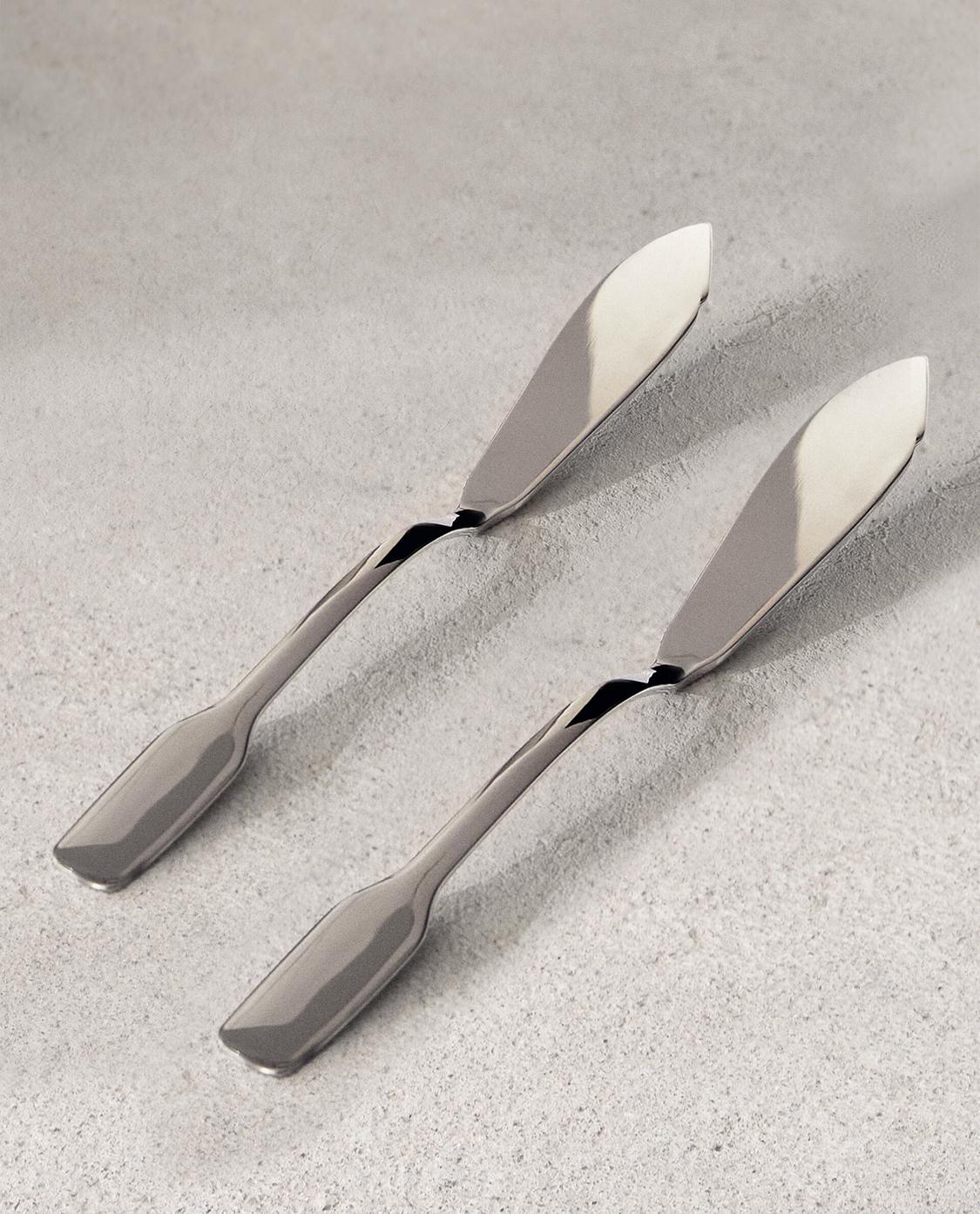Top-rated fish knife options explained
The Ultimate Guide to Maintaining Your Fish Knife for Durability and Performance
Maintaining a fish knife is important for guaranteeing its durability and optimal performance. Proper care entails a series of actions, consisting of cleansing, developing, and storage. Each stage adds to the knife's performance throughout use. Understanding these techniques can make a substantial distinction in the lifespan of this essential device. Numerous individuals forget critical aspects of maintenance that can lead to deterioration. What are these often-forgotten actions?
Picking the Right Fish Knife for Your Requirements
When picking the ideal fish knife, what trick attributes should one think about? The blade's versatility is vital, enabling accuracy while filleting various fish varieties (fish knife). A slim, slim blade typically enhances ability to move, making it much easier to browse around bones and skin. The material of the blade also plays a critical duty; stainless steel provides resilience and corrosion resistance, vital for constant direct exposure to water
Additionally, the deal with's design needs to not be overlooked. It needs to give a comfy hold, ideally featuring non-slip materials that guarantee safety during use. The knife's size is another element; shorter blades can provide far better control, while longer blades might be beneficial for bigger fish. Weight is crucial; a healthy knife enables for prolonged use without fatigue. By thoroughly taking into consideration these functions, one can choose a fish knife that fulfills certain demands for effective fish preparation.
Correct Cleaning Techniques After Each Use
Proper cleaning methods after each use are crucial for maintaining the long life and performance of a fish knife. Quickly after filleting fish, it is important to rinse the knife under warm water to eliminate ranges, slime, and any kind of recurring fish juices. Making use of a soft sponge or towel, the customer ought to gently scrub the blade and deal with, paying special focus to any type of crevices where debris might collect. Stay clear of making use of abrasive products that might scratch the blade's surface area. After cleaning, the knife needs to be thoroughly dried out with a tidy towel to protect against moisture-related damages. Applying a food-safe mineral oil periodically can help preserve its honesty if the knife has a wood take care of. Saving the knife in an assigned sheath or magnetic strip can even more safeguard it from unexpected damage and ensure it stays ready and clean for future use. Regular adherence to these cleansing techniques will certainly improve the knife's lifespan and performance.
Honing Your Fish Knife: Techniques and devices
Sharpening a fish knife is an important process that enhances its efficiency and makes certain tidy cuts while filleting. To attain optimal intensity, a number of tools can be utilized. A whetstone is considered one of the most reliable methods, enabling for accurate control over the sharpening angle. Customers need to wet the rock and keep a consistent 20-degree angle while sliding the blade across its surface.
A honing pole can be made use of for regular upkeep, realigning the blade's side without getting rid of material. For comfort, electrical sharpeners use a quick option, though they may not offer the exact same degree of finesse as hand-operated methods.
No matter of the chosen method, it is crucial to completed with a leather strop to polish the side, ensuring a lancinating coating. Routine honing not just extends the life of the fish knife but additionally enhances the overall performance of the filleting process.
Keeping Your Fish Knife for Optimum Defense
After honing a fish knife, interest needs to transform to its storage to keep the blade's stability and efficiency. Proper storage space is essential for stopping dulling, corrosion, and damage. Preferably, a fish knife must be saved in a safety sheath or knife roll, which guards the blade from contact with ecological variables and various other utensils (fish knife). Magnetic strips can also be efficient, enabling secure and available storage space while keeping the blade safe and secure

Routine Upkeep Regimens to Comply With
A regular maintenance routine is important for preserving the functionality and look of a fish knife. Normal cleaning after each use is essential; rinsing the blade with warm water and light soap gets rid of any residue. It is a good idea to dry out the knife completely to avoid corrosion. Regularly, a light application of food-safe mineral oil can aid secure the blade and maintain its sheen.

Storing the fish knife in a protective instance or sheath stops unintentional damages and maintains it prepared for use. Following these maintenance regimens will dramatically improve the longevity and performance of the fish knife.
Often Asked Concerns
Can I Use My Fish Knife for Various Other Sorts Of Fish?
Yes, a fish knife can be used for various other kinds of fish. The efficiency may vary depending on the knife's design and the certain fish being refined, impacting performance and accuracy throughout prep work.
What Materials Are Best for a Fish Knife Blade?
Stainless steel and high-carbon steel are considered the very best materials for a fish knife blade. Stainless steel provides rust resistance, while high-carbon steel provides premium intensity and edge retention, crucial for effective fish prep work.
How Typically Should I Change My Fish Knife?
A fish knife should normally be replaced every three to 5 years, depending upon usage and upkeep. Normal examination for indications of wear or damage can also assist figure out the ideal time for substitute.
Exist Details Brands Understood for Quality Fish Knives?
Specific brands, like Wüsthof, Victorinox, and Rapala, are renowned for producing top notch fish blades. These brand names are acknowledged for their durability, sharpness, and ergonomic styles, making them preferred selections among angling lovers and specialists alike.
Can Temperature Influence My Fish Knife's Efficiency?
Temperature can substantially impact a fish knife's efficiency. Extreme heat may cause blade products to warp, while chilly problems can cause brittleness. Keeping an get more info optimal temperature level is essential for preserving the knife's functionality and resilience.
The knife's size is another element; much shorter blades can provide much better control, while longer blades might be valuable for bigger fish. Quickly after filleting fish, it is important to rinse the knife under warm water to eliminate scales, scum, and any kind of recurring fish juices. After sharpening a fish knife, interest needs to transform to its storage space to keep the blade's honesty and performance. Ideally, a fish knife need to be stored in a safety sheath or knife roll, which shields the blade from contact with other utensils and ecological factors. Yes, a fish knife can be used for other kinds of fish.